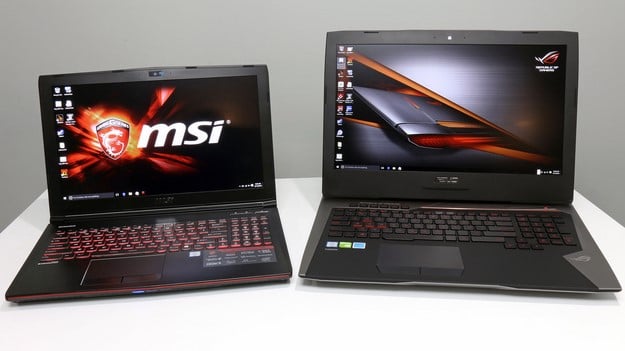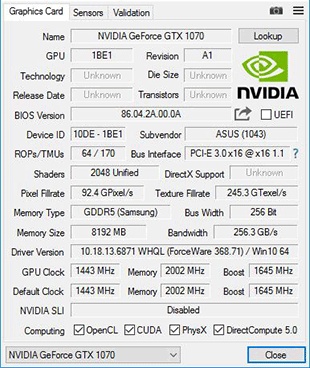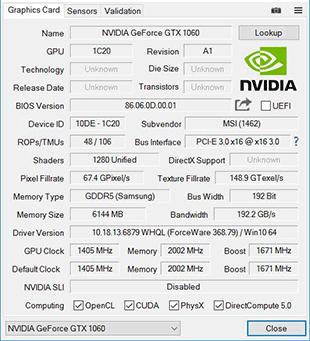NVIDIA Mobile GeForce GTX 10-Series Review: Pascal Notebooks Slay Benchmarks
Introducing NVIDIA's Mobile GeForce 10-Series
NVIDIA's new Pascal GPU architecture has been taking the PC graphics market by storm since its introduction in early May. The leading-edge semiconductor powerhouse, in addition to lighting up pixels, has been burning up its balance sheets as well, with strong sales of GeForce, Quadro and Tesla product lines driving record revenues and a brisk uptick in the company stock price. For NVIDIA's core gamer customer base, the GeForce GTX 1080 and 1070 kicked-off the Pascal party, followed by the introduction of the more mid-range GeForce GTX 1060, and then finally the monstrous NVIDIA Titan X. With the exception of the entry-level graphics segment (a slot in the product stack the company has yet to flesh out), it's been a clean sweep for Pascal-based GeForce cards with best of class bang for your buck and perf-per-watt metrics.

MSI GE62 Apache Pro w/ Mobile GeForce GTX 1060 And ASUS ROG G752VS w/ Mobile GeForce GTX 1070

ASUS ROG G752VS

MSI GE62 Apache Pro

MSI GE62 Apache Pro w/ Mobile GeForce GTX 1060 And ASUS ROG G752VS w/ Mobile GeForce GTX 1070
That said, Pascal is just getting warmed-up and the company's new core graphics architecture is now being driven throughout the its entire product portfolio, as is typically the case. Today, Pascal comes to notebooks with the introduction of the NVIDIA Mobile GeForce GTX 10-Series. However, what may surprise you is that the first two laptop-targeted GPUs we've gotten our hands on are actually quite similar to their desktop counterparts. In fact, all three of the Mobile GeForce GTX 10-Series graphics processors NVIDIA is announcing today come sans the traditional "M" tacked on the end of their model numbers. You may be surprised to find out why.
|
As it turns out, the migration to a 16nm manufacturing process with Pascal has been very kind to NVIDIA, so much so that the Mobile GeForce GTX 1080 and Mobile GeForce GTX 1060 have nearly identical specs to their desktop counterparts, from CUDA core counts, to boost, and memory clock speeds. The Mobile GeForce GTX 1070, however, actually has slightly different specs with a few more CUDA cores, believe it or not, versus its desktop brethren (2048 for mobile, versus 1920 for desktop). However, the mobile 1070 has slightly lower base and boost clocks, at 1645MHz boost for the mobile variant versus 1683MHz for the desktop GPU.

FPS @ 4K - Powered by Mobile GeForce GTX 1080, Core i7-6700HQ, 16GB RAM

FPS @ 4K - Powered by Mobile GeForce GTX 1080, Core i7-6700HQ, 16GB RAM
Because the company was able to cram high-performance, desktop-class GPUs into notebooks, NVIDIA is claiming true 4K and 120Hz gaming is now possible for the very first time on a notebook PC platform. Exactly how NVIDIA achieved this seemingly bold defiance of the laws of physics, essentially fitting desktop graphics engines into the thermal and power envelope of notebook platforms is where the rubber meets the road. We'll dive into the architecture in more detail later, but essentially through careful binning of chips, voltage tweaks, and some board-level power optimizations on the MXM mobile GPU modules, NVIDIA was able to employ essentially the same silicon hardware in their notebook variants of the Geforce GTX 1080, 1070 and 1060.
That's selling the semiconductor process side of things a bit short, however. We'd be remiss if we didn't underscore the fact that the migration down from a 28nm (nanometer) process on the previous generation Maxwell mobile GeForce family, to a 16nm FinFET process in Pascal has delivered a "quantum leap," as NVIDIA likes to call it, in power efficiency and performance-per-watt. A quantum leap is defined as a discontinuous change in state of an electron from one energy level to another. And that indeed would be fitting for what NVIDIA has achieved.
That's selling the semiconductor process side of things a bit short, however. We'd be remiss if we didn't underscore the fact that the migration down from a 28nm (nanometer) process on the previous generation Maxwell mobile GeForce family, to a 16nm FinFET process in Pascal has delivered a "quantum leap," as NVIDIA likes to call it, in power efficiency and performance-per-watt. A quantum leap is defined as a discontinuous change in state of an electron from one energy level to another. And that indeed would be fitting for what NVIDIA has achieved.

ASUS ROG G752VS

MSI GE62 Apache Pro
Here we have two Pascal-powered notebooks -- the 8.9 pound, 17-inch ASUS G752VS and the 5.29 pound MSI GE62 Apache Pro. Previously, these platforms were capable of supporting GPUs like the NVIDIA GeForce GTX 960M, GTX 970M or 980M. However, these new models have received a Pascal injection and, as you'll note on the pages ahead, a performance uplift like you've probably never seen in a notebook previously.
But before we get ahead of ourselves, let's take a closer look at these machines and then we'll give you high level look at NVIDIA's Mobile GeForce 10-Series architecture.
But before we get ahead of ourselves, let's take a closer look at these machines and then we'll give you high level look at NVIDIA's Mobile GeForce 10-Series architecture.








